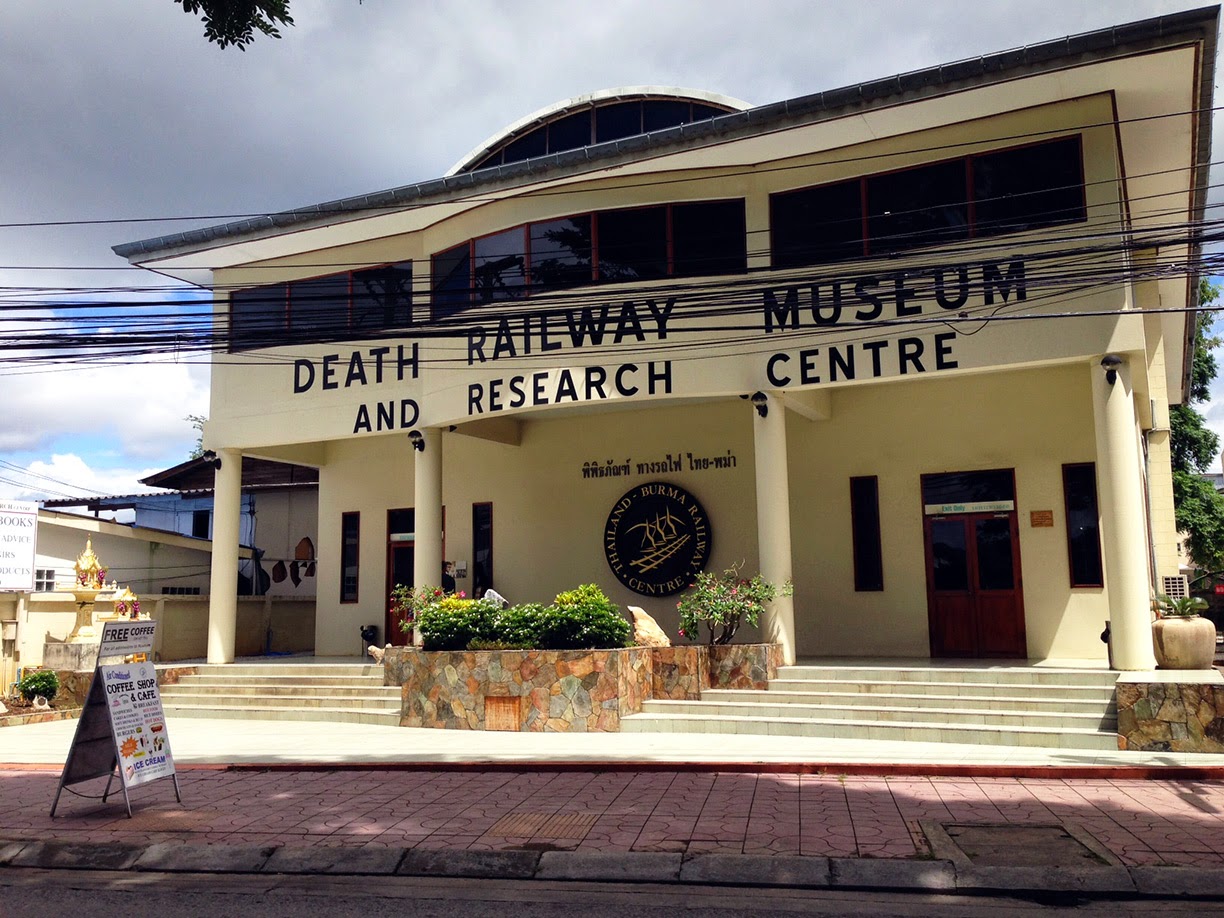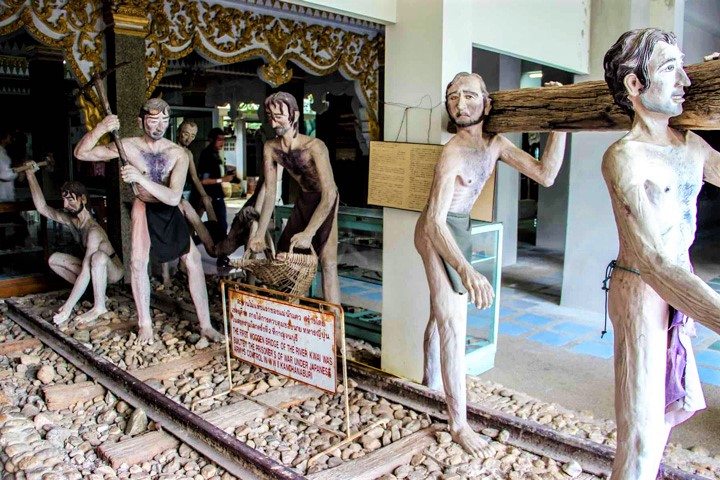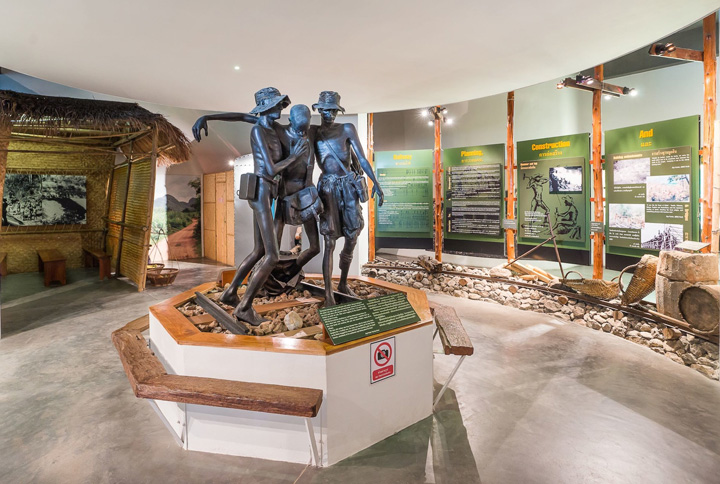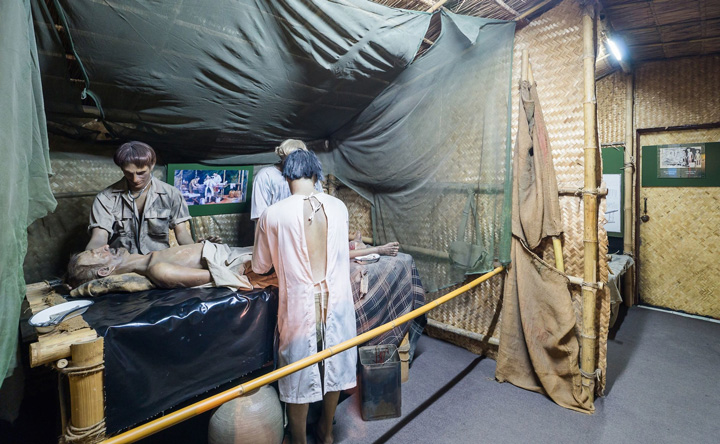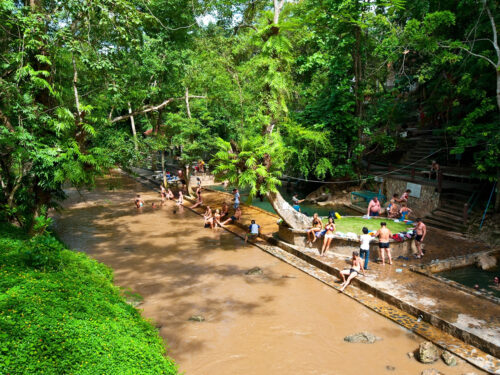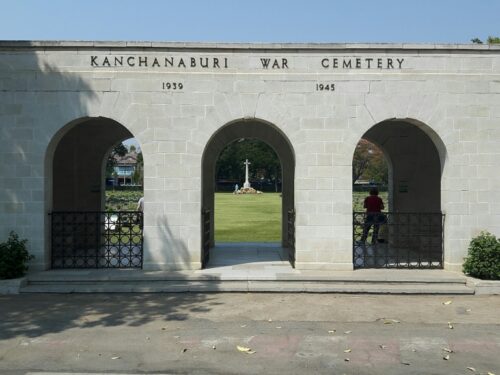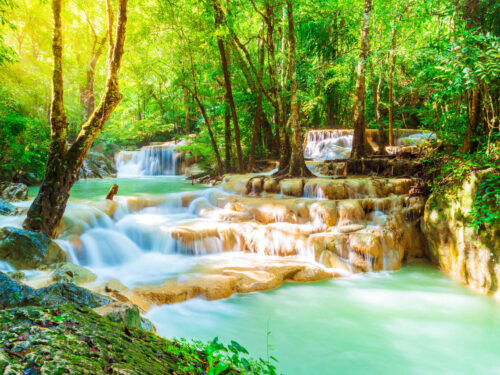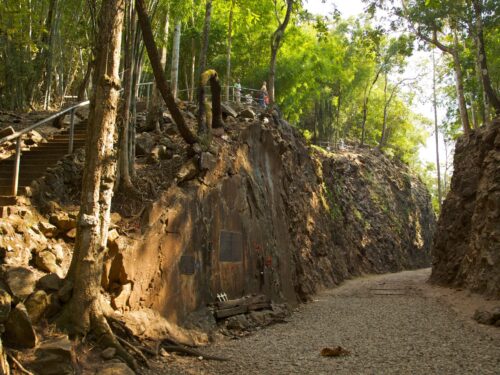Thailand-Burma Railway Centre
Step into the captivating world of the Thailand-Burma Railway Centre. This interactive museum and research facility presents the history of the notorious Thailand-Burma Railway.
Built during World War II by the Imperial Japanese Army, the Death Railway spanned 415 km from Ban Pong in Thailand to Thanbyuzayat in Burma, using Allied prisoners of war and Asian laborers. Thailand-Burma Railway Centre offers a fully air-conditioned, educational, and moving experience, immersing visitors in the gripping story of this monumental railway.
History of Thailand-Burma Railway Centre
The Thailand-Burma Railway Centre owes its existence to the dedication and expertise of Rod Beattie, an Australian researcher and historian of the Death Railway. After extensive surveys and studies of the rail line’s history, Beattie opened the museum and research center in 2003, showcasing his visionary approach. The facility is state-of-the-art, surpassing the other Death Railway museums in Kanchanaburi in terms of quality, accuracy, and comprehensiveness.
While the Hellfire Pass Museum holds the advantage of being located at an authentic site of the former railway line, the Thailand-Burma Railway Centre excels in its meticulous presentation of facts and exhibits. It is widely regarded as the most comprehensive exhibition worldwide on the subject. Notably, Beattie himself played a role in clearing and surveying a section of the overgrown former railway line, establishing a connection between the Railway Centre and the Hellfire Pass memorial site.
Beyond its museum aspect, the Thailand-Burma Railway Centre also serves as a research center. It houses a valuable collection of rare, out-of-print books authored by survivors, making it an invaluable resource for individuals seeking information about relatives involved in the Death Railway’s story. Moreover, the Centre organizes research field trips along less developed stretches of the former railway, providing an immersive experience for those interested in delving deeper into the railway’s history.
Museum Exhibits
Within its walls, you’ll discover eight captivating galleries that delve into the depths of the railway’s history.
Introduction
Upon entering the museum area, visitors are greeted by an intricately constructed wooden bridge replica, mirroring the techniques employed in building the railway bridges. The panels in the galleries provide a factual and unbiased account of the Japanese invasion of Southeast Asia, the capture of prisoners, and the dispersal of Allied captives. Detailed discussions on the planning of the railway’s route follow, leading visitors through a realistic mockup of a “rice wagon” railway boxcar, the very means by which prisoners were transported from Singapore and Malaya to Thailand. Inside the boxcar, an electronic route map illuminated by fiber optic lighting showcases the actual routes taken, creating an immersive experience within the confines of history.
Planning, Construction and Logistics
This gallery details the techniques used by Japanese engineers to plan, design and build the track. Panels in the gallery compare the ingenuity of Japanese engineers with actual construction methods. Particular attention is drawn to the fact that the railroad was built using manpower – very little heavy equipment was used. The gallery contains genuine relics of used construction tools, recovered from the railway route in the late 1990s.
Geography Gallery
The Geography gallery predominantly captivates through visual content. An immersive video display showcases footage capturing various sections of the railway line. At the heart of this gallery lies a remarkable centerpiece: a 9-meter-long contour model, meticulously crafted on a 1:50,000 scale. This extraordinary model utilizes fiber optic track lighting, guiding the viewer along the railway’s route through the mesmerizing River Kwae valley. Additionally, user-controlled LED lights serve as beacons, illuminating the confirmed locations of all the work camps that dotted the railway. Graphic panels seamlessly juxtapose wartime and present-day images, offering a compelling visual narrative of the line’s evolution. A meticulously crafted trestle bridge model and relics of tracks and bridges harmoniously complete this captivating display.
Living Conditions
Five informative panels within this gallery shed light on the prisoners’ movement, accommodation, and food provisions. They offer a comparative analysis of the varying conditions across different work areas, highlighting the profound impact on the workers’ chances of survival. A dedicated panel delves into the haunting period known as the “Speedo” period, spanning from March to September 1943, during which the majority of deaths tragically occurred. Additionally, the gallery showcases two captivating display cases exhibiting relics of personal effects discovered along the traces of the railway.
Medical Aspects
Medical Aspects takes the form of a model hospital hut. Two large panels, Doctors, Illness and Despair and Medical Improvisation, describe the incredible ingenuity, dedication and bravery of the doctors and orderlies who did their utmost to care for the men in their trust.
Summary of Deaths
In the Summary of Deaths gallery, the profound human toll of constructing the railway is vividly depicted with graphic detail. Through meticulous analysis, the gallery highlights the origin of the deceased, offering valuable insights into the tragic losses. A compelling centerpiece takes the form of a histogram, constructed using old railway sleepers adorned with rail spikes. Each spike serves as a poignant symbol, representing five hundred souls.
End of the Railway
There are three elements to this large gallery on the 1st floor. The first part of the gallery describes the short period during which the railroad was actually used by Japanese forces to transport men and material to and from Burma. The gallery then recounts the changing conditions of war in the Pacific theater, as the Allies gained the upper hand, and the subsequent bombing of the railroad. The final part of the gallery describes the defeat of the Japanese forces and the liberation of Asian prisoners and conscripts.
Key display features in this area include a 3-metre-deep model of a railroad trench under construction at night, the almost complete AZON bomb preserved in a display case, and a section of bomb-damaged rail recovered from the track. A video clip clearly shows AZON bombs (the world’s first guided weapon) attacking and destroying a bridge over the railroad.
After the War
The final gallery focuses on the human experience of liberation from captivity and slave labor, repatriation of prisoners, search for bodies, establishment of war cemeteries, and the railway line’s sale to Thai authorities in 1947.
Location
The centre is situated in the north-western part of Kanchanaburi, western Thailand,just 80 miles (130 km) and from Bangkok. It sits directly adjacent to the northern side of the Kanchanaburi War Cemetery, a mere 200 yards south of the main train station.
Opening Hours
Thailand-Burma Railway Centre operates daily from 9 AM to 4 PM, adhering to official Thai closure regulations.
Entrance Fees
The entrance fees for the Centre are 160 THB for adults and 80 THB for children (7-12 years old).
In short, the Thai-Burma Railway Centre in Kanchanaburi is a remarkable testimony to the history of the Death Railway, offering a captivating and educational journey to all those who wish to understand and commemorate the sacrifices made during its construction.
Tourists’ Reviews
Let’s see what other travelers are saying about Thailand-Burma Railway Centre on TripAdvisor:
Neil P
Very humbling ! A must to go to
Apr 2023 • Family
What a truly humbling amazing , eye opening place !
Been on my bucket list for many years !
Incredible what you see in this museum and how those poor men were treated !
Highly recommended to all but not for young children !
hello!
Educational experience
Mar 2023
Visiting the museum with my friends, we were able to learn alot of information on the POWs when building the Death Railway, along with their hardships and sufferings during the japanese occupation. Being SEAsian, we learnt things we did not learn in history textbooks back in our country and being able to read in-depth information on the POWs experience and the conditions they had to deal with back then was an educational experience. The whole museum with numerous artefacts and articles from the POWs were really informative. Overall, I enjoyed the museum and would recommend it to those who like learning more about history.
